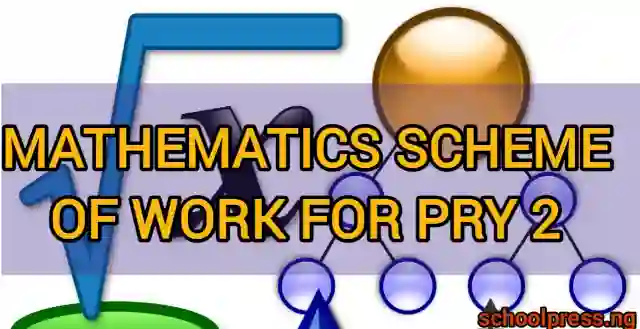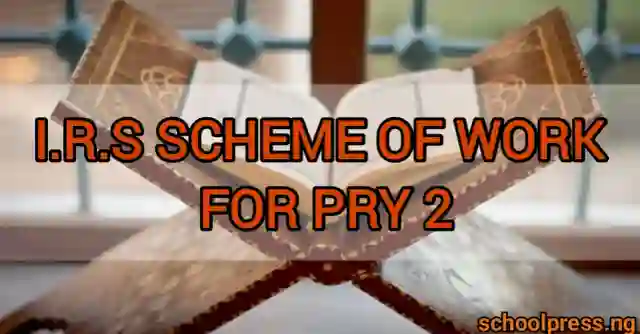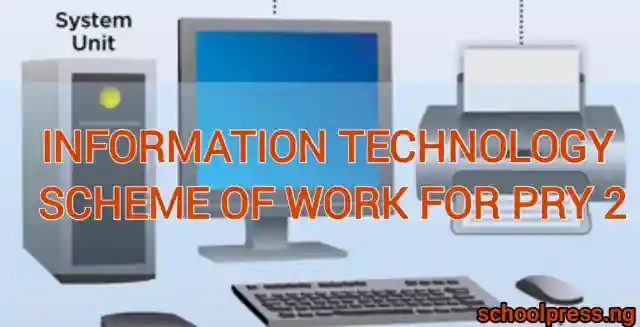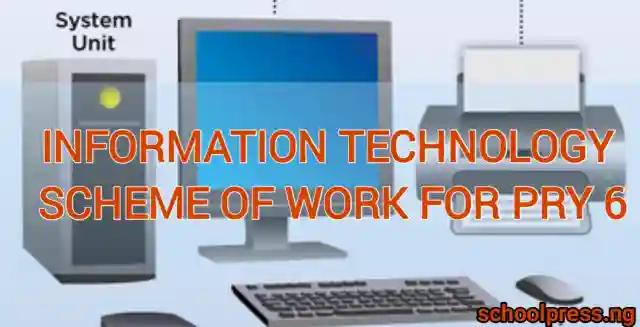Mathematics is an important subject in the life of pupils in primary school, it builds a strong foundation for more advanced concepts in mathematics. Mathematics Scheme of work Primary 2 is prepared to help a teacher prepare children of 5-6 years with adequate mathematics knowledge
The scheme of work is divided into three terms and with each term, there is a specific objective and learning outcomes.
The objectives for first term involve counting numbers up to 100, identifying and writing numbers up to 200, and working with 2- and 3-digit numbers and adding and subtracting them. The pupils learned how to get the percentage of concrete objects and divide collections of objects into equal parts.
The objectives of the second term entail multiplication and division and solving sentence problems. Through this term, the learners will identify missing numbers in the equations and solve the quantitative aptitude problems.
The term will also encompass the use of money, where the pupils will be taught to identify Nigerian coins and notes and shop with money not exceeding N20.
Objectives of the third term include: measuring length; pupils will learn how to measure length through different units and assess the use of standard units, and compare the weight of different objects. Pupils will also understand 2-dimensional and 3-dimensional shapes and measure the number of faces, corners, and edges.
For the objectives to be accomplished, the list of activities that teachers can engage in with their pupils is designed. For instance, in the first term, teacher-guided activities may include the use of counters to help pupils identify numbers counting up to 100, identify place values, and pupils construct and writing numbers counting 0-100.
In the second term, teacher-guided activities included understanding multiplication as repeated addition and being guided on how to finding missing numbers.
In the third term, teachers can expose pupils to the manipulation and utilization of empty containers, with the use centered around measuring capacity. Furthermore, teachers can further assist them in determining the areas of the different surfaces, including the use of standard measuring units .
Lastly, teachers can give pupils circlets, circles, and tangrams to discover shapes whose face is square, rectangular, or circular.
Table of Contents
Objectives of Mathematics Scheme of Work for Primary 2
First Term Objectives
Week 1: Count numbers up to 100, Write numbers up to 100 and Revise the place values of numbers up to 100.
Week 2: Count numbers correctly from 1 – 200.
Week 3: Identify order and write numbers up to 200.
Week 4: Count in pairs up to 20, Count in 5s up to 30, Count in 10s up to 100 with and without the aid of objects and charts, Count in 2s, 5s and 10s. and divide a collection of concrete objects into two equal parts.
Week 5: Obtain % of a concrete object, Identify % using concrete objects and shapes, divide a collection of concrete objects into two equal parts and four equal parts, obtain % of a concrete object.
Week 6: Add 2-digit digit numbers without exchanging or renaming, add 3-digit numbers without remaining or exchanging.
Week 8: Add 2-digit numbers with exchanging or renaming, Add 3 numbers taking two at a time
Week 9: Subtract 2-digit numbers without exchanging or renaming, Subtract 2-digit numbers with exchanging and renaming.
Week 10: Subtract 2-digit numbers with exchanging and renaming, Apply addition and subtraction in everyday life activities.
Second Term Objectives
Week 1: Multiply numbers using repeated additions, Apply corrections in multiplications as important in every activity.
Week 2: Apply correctness in multiplication as important in everyday activities, understand that i. any number multiplied by 0 is 0. ii. any number multiplied by 1 is that number.
Week 3: Solve addition and subtraction of 2-digit numbers with or without exchanging or renaming, Solve exercises on addition of three numbers taking two at a time. -solve exercise on multiplication
Week 4: Find missing numbers in an open sentence, Solve simple related quantitative aptitude problems
Week 5-6: Enumerate the uses of money, Recognize all types of Nigerian coins and bank notes, change money up to N20 into small units and shop with money not greater than N20.
Week 8: Compare their natural units with another e.g. arm’s length, Identify the differences in arm’s length and other parts of the body used for measurement, Use meters and centimetres as standard measuring units, Identify the needs for length and measurement using standardized units.
Week 9: Give time to the hour and a half, name and arrange the days of the week
Week 10: Order objects according to their weights
Third Term Objectives
Week 1-2: Identify and name objects that could be used for measuring capacity e.g. cups, empty containers, buckets etc, Order containers based on their capacities
Week 3: Compare areas of surfaces, and identify the use of standard measuring units.
Week 4-5: identify and count the flat faces of a cube and a cuboid, Identify and count the corners of a cube and cuboid, and Identify and count the edges.
Week 6-8: identify a square, rectangle, circle and triangle, Indicate which corner of a 2-dimensional shape is a square corner
Week 9-10: Collect data and arrange them in arrays, Collect data and arrange them in groups such as groups of boys and groups of girls
Read More: 2024 JAMB UTME Form: Know The Important Information For The Exam Registration
Learning Outcomes of Mathematics Scheme of Work for Primary 2
First-Term Learning Outcomes
Week 1: Count numbers up to 100, Write numbers up to 100 and Revise the place values of numbers up to 100.
Week 2: Arrange and count correctly using bottle tops in tens up to two hundred, Count bundles of straw in tens and hundreds up to two hundred, and build pics corresponding to given numbers, Say the numbers representing a pile and Build piles corresponding to given numbers.
Week 3: Identify and read given numbers on flashcards, Write given numbers in expanded form, Order given piles of numbers, and Write numbers up to 200.
Week 4: Count in 2s from 1 to 30. 6. Count in 5s up to 30. 7, Count in 10s up to 100 without any charts, Find A of the given collection of objects, and Find % of the given collection of objects.
Week 5: Find % of given collections of objects, Find V and % of a given collection of objects, Find % of given collections of objects.
Week 6: Add given 2-digit numbers without exchanging or renaming, add 3-digit numbers vertically without exchanging or renaming.
Week 8: Add 2-digit numbers with exchanging and renaming and add 3 given number taking two at a time.
Week 9: Subtract 2-digit numbers without exchanging or renaming, Subtract 2-digit numbers with exchanging and renaming.
Week 10: Subtract 2-digit numbers with exchanging and renaming, mention 4 everyday activities where accuracy is needed.
Second Term Learning Outcomes
Week 1: Multiply the given numbers using repeated addition.
Week 2: Solve the following exercise: a. 2 x 0 = b. 6 x 0 = c. 10 x 1 = d. 12 x 1 =
Week 3: Solve exercises like the following: a. 12 + 13 = b. 9 – 5 = c. 28 + 14 = ,Solve related exercises e.g. solve the following: a. 31+26+42 = b. 21 + 35+16 = 56 + □ = 112 □ x 3 = 36. 10 x □ = 90
Week 4: Solve given problems on open sentences, Find missing numbers in a simple related quantitative aptitude problem
Week 5-6: List various uses of money, Recognize and identify given Nigerian coins and banknotes, and Collect correct change from buying an article from the class shop.
Week 8: Measure the width of their classroom with their foot and arms’ length.
Week 9: say the time on a given cardboard clock or time on the clock drawn on the cardboard, Write the time of a given diagram or cardboard on the board/exercise book. 3. Name the days of the week, 4. Name the day before and after a given day.
Week 10: Compare the weights of two given objects and leaners and determine which or who is heavier than the other.
Third Term Learning Outcomes
Week 1-2: Use a small cup to measure water into a container and say how many of the cups of water would fill the container, Order given containers based on capacities.
Week 3: Compare areas of given surfaces.
Week 4-5: Identify cuboids and cubes from a given collection of three-dimensional objects, Count the faces, corners and edges of a given cube and cuboids, Mention three objects each that are cuboids and cubes, Complete a chart to indicate the number of flat faces, corners, edges and curved surfaces of a cube, cuboid, cylinder and a sphere.
Week 6-8: Identify objects that have square, rectangular and circular faces, Draw different types of triangles in their exercise books, Match given shapes with their corresponding names and identify square corners of a given cube, cuboid, square, rectangle or triangle.
Week 9-10: Arrange the numbers in order, Group the numbers in order.
Read More On Primary 2 Scheme of Work
Basic Science Scheme of Work for Primary 2
Basic Technology Scheme of Work for Primary 2
Physical Health Education Scheme of Work for Primary 2
Information Technology Scheme of Work for Primary 2
Cultural And Creative Art Scheme of Work for Primary 2
History Scheme of Work for Primary 2
Social Studies Scheme of Work For Primary 2
Civic Education Scheme of Work for Primary 2
Christian Religious Studies scheme of work for Primary 2
Islamic Religious Studies Scheme of Work for Primary 2
First Term Mathematics Scheme of Work for Primary 2
| WEEK | TOPIC | CONTENT |
| 1 | Whole numbers 1 – 5 | Sorting and classifying objects leading to idea of 1 – 5. 2. Identification of a number of objects. 1 – 5. |
| 2. | Whole numbers 1 – 5. | Reading of numbers 1 – 5 and writing of numbers 1 – 5. 2. Ordering of number 1 – 5. |
| 3. | Whole numbers 0 (Zero). | Identify number 0. (zero). 2. Tracing and writing number. |
| 4. | Whole number 6 – 9. | Sorting and classifying objects leading to idea of 6 – 9. 2. identification of numbers 6 – 9. 3. Counting and reading numbers 1 – 9. |
| 5. | Whole number 10. | 1. Recognition of 10 as a number. 2. making set of 10 members with various objects. |
| 6. | Whole numbers 1 – 19. | Tens and ones or tens and units. 2. Counting and reading tens and units of different numbers with their correct names. |
| 7. | Mid Term Test | |
| 8. | Whole numbers 1 – 99. | 1. identification and reading of numbers 1 – 99. 2. writing of numbers 1 – 99. |
| 9. | Fraction | Identification of Vz and % using concrete objects and shapes. |
| 10. | Fraction | Identification of one- quarter of whole. |
| 11. | Revision | |
| 12 & 13 | Examination |
Second Term Mathematics Scheme of Work for Primary 2
| WEEK | TOPIC | CONTENT |
| 1 | Addition | Addition of whole numbers with sum less than 5. addition of whole numbers less than 10. |
| 2. | Addition | Addition of whole numbers with sum less than 18. |
| 3. | Addition | Addition of items of 2- digits whole numbers with sum not greater than 40. |
| 4. | Subtraction | Subtraction from whole not greater than 9. |
| 5-6 | Subtraction | Subtract from whole numbers not greater than 18. |
| 7. | Mid Term Test | |
| 8. | Subtraction | Find the missing numbers e.g. – □ = 4- □ = 5 5 – □ = 3 |
| 9. | Open Sentences | Find the missing numbers in addition. 2. Find missing numbers in subtraction. |
| 10. | Money | Nigerian coins 25 k, 10 k, 5k, 1k, and ^k. Sum of two or three coins.Shopping with a 10k piece and receiving change.Tracing of coins. |
| 11. | Revision | |
| 12 & 13 | Examination |
Third Term Mathematics Scheme of Work for Primary 2
| WEEK | TOPIC | CONTENT | |
| 1-2 | Length | idea of length. comparison of length of two or more objects to develop the idea of ‘longer than’ and ‘shorter than’. 3. ordering of lengths of objects. | |
| 3. | Time | Introduce the idea of time.Time when certain things are done e.g. -morning, -afternoon, evening and night. | |
| 4&5 | Weight | Estimating weights by lifting different objects. Ordering of weights.Stating the importance of weight and areas where weight can be used. | |
| 6 | Squares, rectangles and circles. | Squares, rectangle and circles. | |
| 7. | Revision and Continuous Assessment | ||
| 8. | Two-dimensional shapes. | Cubes, Cuboids, Cylinders and Spheres. | |
| 9&10 | Data collection. | Three-dimensional shapes | |
| 11. | Revision | ||
| 12. | Examination | ||
Teacher’s and Pupils Activities
First Term Teacher’s and Pupil’s Activities
Week 1: The teacher should Allow learners to use counters to count numbers up to 100, Let learners write numbers up to 100 and Lead learners to recognize and read place values up to 100 using abacus.
The Pupils should Use counters to count numbers up to 99, write numbers up to 99 and Recognize and read place values up to 100 as tens and units, i.e. T U
Week 2: The teacher should Guide learners in revising the counting of numbers from 1 – 100 using counters and 100-square charts, add one counter to 99 counters and recap that 100 is equal to 99 plus one i.d 100 = 99 + 1, count numbers 1 – 200, Guide learners to identify and read numbers from 1 – 200, Build up piles in tens and unit and demonstrates place value.
The Pupils should Revise counting from 1 – 99, Layout bottle tops in rows and columns of tens, count, Identify and read numbers from 1 – 200, Build up piles to correspond with the numbers given and Build up piles in tens and units.
Week 3: The teacher should Guide learners to use bundles or piles to demonstrate place value, Guide learners to order given piles of numbers and Write numbers up to 200.
The Pupils should Write numbers in expanded form and use the same to find place value, Order given piles of numbers, Write numbers up to 200.
Week 4: The teacher should Revise counting of numbers 1 – 200 with learners, Explain how to use counters to count in pairs i.e. counting in twos, Lead learners to count seeds or sticks in pairs up to 30, and Guide the learners to divide the objects into two equal parts i.e. A of 10 = 5.
The Pupils should Participate in the revision class, Practice the use of counters to count in pairs, Count seeds or sticks in pairs up to 30 and Divide the objects into two equal parts. A of 10 = 5.
Week 5: The teacher should Guide learners: Divide the objects into four equal parts to obtain three-quarters, fold cardboard papers once and fold again to get four parts or cut an orange into four equal parts and remove one part, and present each object as one whole, cuts an object e.g. an orange into four equal parts to obtain three-quarter and Guides learners fold cardboard paper once and fold again to get four parts and shade the three parts or cut an orange into four equal parts and remove one part.
The Pupils should Divide the objects into four equal parts to obtain three-quarters, Fold cardboard papers once and fold again to get four parts or cut an orange into four equal parts and remove one part, Divide the object into two equal parts and four equal parts i.e. V of 10= 6, % of 20=5, Divide the objects into four equal parts to obtain three-quarters. 5. Fold cardboard paper once and fold again to get four parts and shade the three parts or cut an orange into four parts and remove one part.
Week 6: The teacher should revise the Revision addition of 2digit numbers without exchanging or renaming e.g. 15 + 14 = 1 5 + 1 4 2 and guide learners to solve addition problems of 3-digit numbers e.g. 141 + 125 = 1 4 1 + 1 2 5
The Pupils should Revise the addition of 2-digit numbers without exchanging or renaming and Solve the addition of 3-digit numbers such as 141+125 = 266 1 4 1 +1 2 5 2 6 6 Provides answers to the given problems
Week 8: The teacher should Lead learners to arrange counters in bundles of tens and units. E.g. 35 sticks = 3 bundles of sticks and 5 pieces, Lead learners to count and say the numbers in the expanded form and be able to write the numerals in that form. e.g. 96 = 9 tens + 6 units, Guide learners to solve some addition problems on the board. e.g. 17 + 19 =|2 and Guide learners to mention the number of tens and units in each of the numbers, write
The Pupils should Arrange counters in bundles of tens and units. -Count and say the numbers in the expanded form and write the numerals as: 96 = 9 tens + 6 units, 75 =7 tens + 5 units, 58 = 5 tens + 8 units, Add given 2-digit numbers on the Board, Mention the number of tens and units in each of the numbers on the Board and Solve the verbal addition contained in the addition cards.
Week 9: The teacher should Revise the subtraction of 1- 1-digit numbers. -Lead Learners to identify a number of tens and units in 2-digit numbers i.e. place value. -Guide Learners in the use of counters to demonstrate subtraction as taking away in 2- digit numbers e.g. 44 – 12 = 4 4
The Pupils should Discuss quick problem on subtraction of 1digit numbers, Practice expressing place value e.g. 36 = 3 tens, 6 units, 28 = 2 tens, 8 units, Give the answer to given problem using counters e.g. count 44 and take away 12. 44 – 12 = 32 4 4 -1 2 3 2
Week 10: The teacher should Guide learners to identify the digits that are in tens and units e.g. 43 = 4 tens + 3 units 57 = 5 tens + 7 units 83 = 8 tens + 3 units, Lead learners to give examples of everyday activities where the accuracy of addition and subtraction are required and Guide Learners to mention the number of tens and units in a given problem. e.g. subtract 47 from 54.
The Pupils should Mention the digits in the tens and units in the expanded form, Give examples of everyday activities where accuracy of addition and subtraction are required and subtract given 2-digits numbers, 3. Mention the numbers of tens and units in a given number.
Second Term Teacher’s and Pupil’s Activities
Week 1: The teacher should Use a counter to demonstrate the idea of multiplication as repeated addition. E.g. 2+2+2=6 and 4+4 = 8. i.e. three sets of two and two sets of four. -Guide Learners to use the symbol “x” to mean multiplication i.e. 2+2+2=2×3=6 4+4=4×2=8
The Pupils should try out multiplication as repeated addition. -use the symbol “x” in multiplication.
Week 2: The teacher should Explain to Learners that any number multiplied by o is 0, e.g. 1. 2 x 0 = 0 or 0 x 2 = 0 ii. 50 x 0 = 0, also lets Learners know that any number multiplied by 1 is that number.
The Pupils should understand that any number multiplied by 0 is 0 and know that any number multiplied by 1 is that number
Week 3: The teacher should give practical exercises and tests on addition and subtraction of 2-digit numbers with or without exchanging or renaming. -test learners on the addition of three numbers taking two at a time and give practical exercises and tests on multiplication
The Pupils should Do practical exercises and tests on addition and subtraction of 2-digit numbers with or without exchanging or renaming. -Practice exercises and tests on the addition of three numbers taking two at a time and Solve practical exercises and tests on multiplication.
Week 4: The teacher should Guide learners to find missing numbers such as: 2 + □ = 5 6 – □ = 3, Guide learners to solve simple related quantitative aptitude problems.
The Pupils should Solve a series of problems involving open sentences, Solve simple related quantitative aptitude problems.
Week 5-6: The teacher should Guide learners to list the various uses of money, Guide learners to recognize and identify Nigerian coins and banknotes, and Bring various articles to the class with price tags not more than N20. -Model of coins are also brought to the class by the teacher and Guide learners’ shop in the class.
The Pupils should Mention the uses of money, Recognize and identify the Nigerian coins and banknotes, Change money up to N20 into small units and shop with money not greater than N20.
Week 8: The teacher should Guide learners to measure the length of the classroom with their foot and arm’s length and record their results, Lead learners to find the difference in arm’s length and other parts of the body used for measurement, and guide learners to used metre rule to measure same objects in the class, Emphasizes on the importance of standard unit as opposed to natural units of measurement and Lead learners to identify the need for standard units of measurement within the society.
The Pupils should Measure the length of their classroom with their foot and arms’ length and compare their results with one another, Identify the difference in arm’s length and other parts of the body used for measurement, Use a metre ruler to measure some objects in the class, Note the importance of standard unit as opposed to natural units of measurements and Identify the need for standard units in measurements.
Week 9: The teacher should Explain the long and short hands of the clock, Lead Learners to relate half hour to half of the clock face and emphasize the convention of say “half past”, Write a given topic on the board, Guide learners’ name the days of the week and Lead learners to arrange and learn the days of the week in order from Sunday to Saturday.
The Pupils should Say the time as shown on the clocks. (Real or Cardboard), Write given time in their exercise books, Name the days of the week and Arrange and learn the days of the week in order from Sunday to Saturday.
Week 10: The teacher should Guide the learners in comparing the weights of objects taking two at a time by using: Hand balancing, and improvised scale, Obtain the weights of different learners using see-saw and bathroom scales, and Arrange the objects/learner’s weights obtained to determine which object/learners weight is heavier than the other.
The Pupils should Compare the weight of objects and their weights using: hand balancing, improvised scale, bathroom scale and see-saw, Arrange the objects/learners’ weights obtained to determine which object/learner’s weight is heavier than the other.
Third Term Teacher’s and Pupil’s Activities
Week 1-2: The teacher should Guide learners to understand the uses of the empty containers and emphasize the use of the containers for measuring capacity, Guide learners to measure into different containers of different sizes with a small container and note how many are in each case, Guide learners to arrange the containers according to the number of time the small containers was measured and Explain the arrangement and lead learners to the idea based on capacities.
The Pupils should Say the uses of each of these capacities, measure and note the number of times in each case, and Arrange the containers according to the number of times the small containers were measured.
Week 3: The teacher should Guide learners to compare areas of different surfaces and lead learners to appreciate standard measuring units.
The Pupils should Compare areas of different surfaces, and identify the use of standard measuring units.
Week 4-5: The teacher should Guide the learner to identify and count the faces, corners, and edges of a cuboid and a cube Lead learners to mention objects at home that are cuboids and cubes, Guide learners to I, identify the flat curved surfaces of a cylinder and a sphere, Lead learners to mention the differences between flat faces and curved surfaces of a cylinder and a sphere, Lead learners to mention objects at home that are cylinders and spheres.
The Pupils should identify and count the faces, corners and edges of a cuboid and a cube, Copy the board summary, Mention objects at home that are cuboid and cubes, Identify the flat faces and curved surfaces of a cylinder and a sphere, identify the differences between the flat faces and curved surfaces of a cylinder and a sphere.
Week 6-8: The teacher should tangle, circle and triangle materials to class, Lead learners to identify square and rectangular faces of cubes, cuboids and circular faces of cylinders, Lead learners to draw triangles by joining three non-collinear points, Lead learners to discover that triangle has three sides and three corners, Guide learners to discover that a square or rectangle has four square corners, Guide learners to discover that some triangles have only one square corner while other triangles have no square corner.
The Pupils should Identify square and rectangle faces of cubes and cuboids and circular faces of cylinders, Draw triangles by joining three non-collinear points, Identify that a triangle has three sides and three corners, Discover corners that are squares, rectangles and some triangles, Discover that a square or a rectangle has four square corners and Discover that some triangles have only one square corner while other triangles have no square corner.
Week 9-10: The teacher should Guide learners to collect data and arrange them in arrays. 2/ Arrange them in groups such as groups of boys and groups of girls.
The learners should Collect data and arrange them in arrays and Collect data and arrange them in groups.
Conclusion
The Mathematics Scheme of Work for Primary 2 is an important resource that supports teachers in providing quality and holistic mathematics to kids between 5 to 6 years old.
The objectives and learning outcomes are developed systematically to ensure that teachers cover all the important topics like counting, addition and subtraction, multiplication, and division.
The creative activities in the scheme enable teachers to help their pupils develop a strong base for mathematics, which will make it easier for them to understand the subject in the future.









